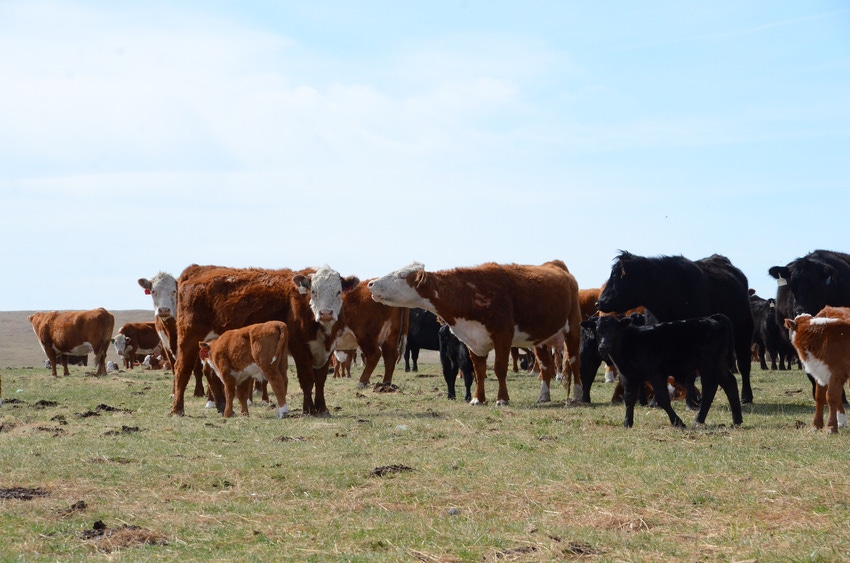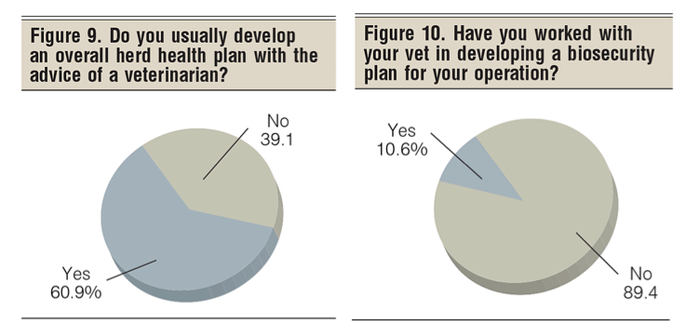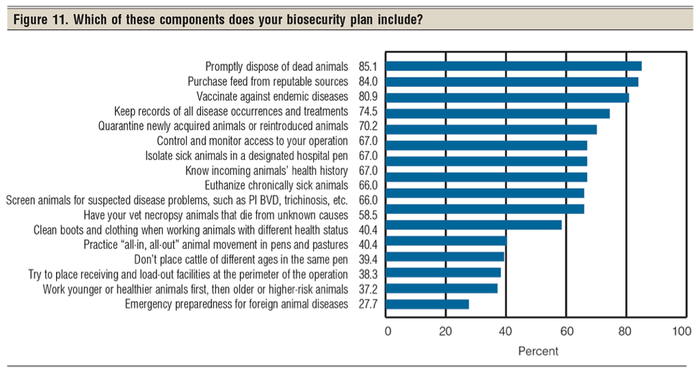Late last year, BEEF surveyed our readers to get a feeling for how ready the industry was for the veterinary feed directive (VFD). Included in that survey were questions about the vet-client relationship, an important part of the VFD regulations.

Spring is here and it’s time to take a look at your yearly herd health plan to see if it needs to be revised or updated. Consulting with your veterinarian is key in making a plan that fits your ranch.
According to a 2016 survey of BEEF readers, producers who see their veterinarians several times a year tend to use them as consultants instead of mobile emergency rooms. When readers were asked if they usually develop an overall herd health plan with the advice of a veterinarian, 60.9% say yes while 39.1% say no (Figure 9 from the 2016 survey).

Yet it appears that there is more work left for a veterinarian in terms of consulting with an operation. When asked if readers have worked with a vet in developing a biosecurity plan for their operation, 10.6% say yes and 89.4% say no (Figure 10).

Of those readers who use their veterinarian to help develop a biosecurity plan, they include a wide range of practices to ensure they don’t buy a herd health wreck when they bring cattle onto their ranch. The top three biosecurity practices readers use are prompt disposal of dead animals, purchasing feed from reputable sources and vaccination (Figure 11).
Has your relationship with you veterinarian changed since the implementation of the VFD? What are your now relying on them for that you previously didn’t? Leave us a comment below.
About the Author(s)
You May Also Like



